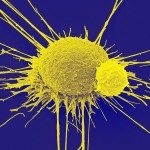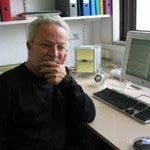Link to Pubmed [PMID] – 15661871
J. Immunol. 2005 Feb;174(3):1178-87
The outcome of an immune response relies on the competitive capacities acquired through differentiation of CD4(+) T cells into Th1 or Th2 effector cells. Because Stat4 and Stat6 proteins are implicated in the Th1 vs Th2 generation and maintenance, respectively, we compare in this study the kinetics of Stat4(-/-) and Stat6(-/-) CD4(+) T cells during competitive bone marrow reconstitution and lymphopenia-driven proliferation. After bone marrow transplantation, both populations reconstitute the peripheral T cell pools equally well. After transfer into lymphopenic hosts, wild-type and Stat6(-/-) CD4(+) T cells show a proliferation advantage, which is early associated with the expression of an active phospho-Stat4 and the down-regulation of Stat6. Despite these differences, Stat4- and Stat6-deficient T cells reach similar steady state numbers. However, when both Stat4(-/-) and Stat6(-/-) CD4(+) T cells are coinjected into the same hosts, the Stat6(-/-) cells become dominant and out-compete Stat4(-/-) cells. These findings suggest that cell activation, through the Stat4 pathway and the down-regulation of Stat6, confers to pro-Th1 T cells a slight proliferation advantage that in a competitive situation has major late repercussions, because it modifies the final homeostatic equilibrium of the populations and favors the establishment of Th1 CD4(+) T cell dominance.


